#freda wallace
Explore tagged Tumblr posts
Text
Since I have a continuing history of keeping up with IDW-ish podcasters on YouTube (Glenn Loury, Coleman Hughes, etc.) who occasionally do episodes on trans issues as well as a spotty history of clicking on videos with clips of Jordan Peterson, the algorithm recommends a lot of videos on "transgenderism" and "the trans debate" and so on to me. A noticeable and (to my thinking) really concerning aspect of the whole set of issues is how reliably anyone who expresses interest in debating or even critically discussing trans issues is, um, on one general side of them, and how little debating or critical discussion there seems to be available. I avoid clicking on videos with titles involving "transgenderism" or "transgender ideology" or "the trans debate" and other tribal buzzwords for a bunch of reasons, but I decided to make an exception the other day when I saw a video entitled "DEBATE: does transgender ideology threaten liberal values?" (a terribly-phrased question, like most debate questions are) because it appeared to be... an actual debate! With people on both sides showing up! (Though apparently not among the audience, which by the sound of it was entirely on the anti-trans side.)
So of course, as I should have fully expected, this debate only supported my conviction that the rhetoric of nearly everyone on all sides of this is just terrible. The only nuanced and halfway decent debater here was Peter Tatchell (on the trans rights side), and some of even his arguments were used to catch him in a bind later on (more on that later). The debate as a whole was generally a bit of a -- I can only use the term shitshow here -- with debaters (mainly Freda) interrupting each other, the (seemingly entirely anti-trans) audience heckling the trans-rights debaters, and the somewhat awkward and ineffectual moderator mostly failing to keep everyone in order. Well, what better could I have expected?
Marc Glendening (on the anti-trans-rights side) had less to say than everyone else and was basically just a robot trying to churn out dry legal summaries of the situation and spouting claims about free speech rights being taken away that I find extremely dubious as phrased by him (I don't know too much about what's going on in the UK, but if we took Marc's depictions of the situation at face value, they do not jibe with his teammate Helen's completely lack of inhibition in misgendering Freda in a video-recorded debate!).
Helen Joyce was the only person involved that I was familiar with from before, since many months ago I watched an episode of Coleman Hughes' podcast where he interviewed her, thought she had some reasonable points and liked her overall rational manner of arguing, but lost any sense of her credibility because of her completely unbending and extreme absolutism. YouTube had been recommending me videos with her ever since (I really hate how stubborn the algorithm is), and I had refused up until now to click on anything involving her again. In this debate I saw the same extremist tendencies and genuine TERFiness (up until fairly recently my exposure to TERF ideology was mostly indirect as something people on Tumblr criticized and I was beginning to wonder how much of it was actually out there in force and what it really looks like -- it seems to have plenty of force in the UK and Joyce is probably one of the gentler examples I suppose!) and also saw a rational and dignified approach which I admire but unfortunately didn't lead to actually good arguments. There is plenty of room for rebuttal to Helen's arguments from my perspective, and of course almost none of that material was ever rebutted by the other side, which again doesn't surprise me given how little (in my experience of watching/reading criticisms of, say, JKR's arguments) people on the trans rights side seem to actually directly address certain types of opposing arguments. I can't decide which bothers me more: Helen's repeated comments about how the rest of the debaters went through male puberty and therefore their male voices enabled them to talk over her (easily refuted, mainly in the case of the trans women sitting on the other side, and meanwhile neither of the men ever interrupted or talked over her, but nobody addressed this, and it places Helen across my personal "too borderline-misandristic for me to feel comfortable hanging around her" line), or her claim that those men who do insist on trespassing women-only spaces have proved that they are among the dangerous ones because they don't care about women's boundaries (a very dangerous mentality, and displaying exquisite lack of theory of mind, and again nobody tried to rebut it).
Freda Wallace is... a complete mess, and I think an embarrassment to her cause. She spoke a lot (while delusionally muttering that Helen wouldn't stop talking), and very little of what she had to say comprised actual argumentation but was more of a semi-incoherent jumble of points that often ended in punchlines that seemed to be deliberately phrased into ridiculous and bizarre statements perhaps crafted to be provocative and eliciting scorn from the audience. She frequently interrupted all three of the debaters generally with childish and semi-irrelevant ad hominems, even eventually visibly pissing off her own teammate Peter. Freda appears to be exactly the caricature of aggressive, loud, attention-seeking, obnoxious, shameless, hedonistic, fetishistic trans woman that J. K. Rowling types seem to imagine among trans activists. ("So, when I fuck men, with my female penis, in fetish clubs, it is my choice. It doesn't matter what you think. And those men support Sex Matters, because in public they will, but in private, they'll fuck me [ending in a smug grin]" is... I guess technically a way that someone can talk during a recorded public debate, but maybe shouldn't be recommended? I didn't notice until I read the comments later how a minute or two after that, her teammate Peter repeated tries to get her to stop interrupting, then gently grabs her arm as she lifts her glass of wine again saying, "No more drink.") If the trans-rights organization involved wanted to strengthen transphobia and transmisogyny in particular, they probably could not have chosen a better trans woman to put on their team. There's something to discuss here (although if I tried to develop where I speculatively want to go with this, I might quickly get myself into hot water) about how difficult it seems to be to get a member of the trans community to participate in an event like this, and how it requires the very thickest-skinned type of personality which unfortunately in this case also coincides with the most loud and shameless. (This is a very under-developed and perhaps sloppily-phrased point that I probably shouldn't be leaving in this post!)
As I said earlier, Peter Tatchell, along with many of his arguments, I actually liked; he seems like a pretty cool guy all around. He did get backed into a corner at one point through an audience member's question: he had repeatedly made the argument that excluding male-bodied people from women's shelters because men are more likely to be violent was choosing to treat an entire group based on a generalization and that he was against this on principle (compare to refusing to allow immigration from certain groups because some tiny minority of them is more likely to be dangerous, etc.), and he was asked whether he wasn't generalizing in the exact same way by being in favor of excluding cis men ("all men, as you identify who's a man") from women's spaces. At first Peter seems to misunderstand that the questioner is talking about cis men and be trying to duck the question, but eventually he is backed into acknowledging the question and taking the stance that "people who present as men" should be excluded from women's bathrooms but trans women shouldn't -- a position that sounds quite blatantly transphobic in more than one way by the lights of much of trans activism! Also, Peter's stern coldness in stopping Freda from interrupting him with disagreement during his point about transness showing in people's brains says all we really need to know about his opinion of his own teammate, and I do kind of feel bad for him for having been paired with her, which I imagine was not his choice.
I looked briefly through the comments section to see if there was any discussion of why the video (annoyingly) cuts off abruptly before the end of the event (which wound up mentioned only once that I could see). Never have I seen a sea of comments so 100% skewed in favor of one side of an issue and in one direction: how amazing Helen Joyce is (and with a heap of derogatory and sometimes extremely transmisogynistic comments about Freda Wallace -- they go further than Joyce did by naming her Fred, a few do call her Freda and use feminine pronouns, but in at least one instance someone's use of "her" was "corrected" in a one-word response by another commenter!). It makes me wonder what happens to create a section of hundreds of comments that are literally 100% on one side -- is there a sort of tipping point when one side becomes a strong enough majority that everyone on the other side is just afraid to comment, or gets downvoted to invisibility by the rating system? Either way, this debate strikes me as weak enough on the pro-trans side that trans right activists probably wouldn't want to advertise it on YouTube.
Anyway, very very discouraging for anyone who would like our public discourse on this set of issues to stop being more of a complete mess than the public discourse on pretty much every other contentious social issue has been.
#trans issues#terfs#helen joyce#freda wallace#immigration#trans women are women and freda is a woman#but sorry the validity of “female penis” is going too far for me#and is deliberately provocative like most of freda's language
10 notes
·
View notes
Text
Midas Man actors & real-life counterparts

JACOB FORTUNE-LLOYD as BRIAN EPSTEIN
---

LEO HARVEY-ELLEDGE as GEORGE HARRISON
CAMPBELL WALLACE as RINGO STARR
JONAH LEES as JOHN LENNON
BLAKE RICHARDSON as PAUL McCARTNEY
---

ADAM LAWRENCE as PETE BEST
---

DARCI SHAW as CILLA BLACK
---

JORDAN KELLY as GERRY MARSDEN
[?] as BILLY J. KRAMER (can't find the actor's name!!!)
CONOR MEDLOCK as TOMMY QUICKLY
---

EDDIE MARSAN as HARRY EPSTEIN
---

EMILY WATSON as QUEENIE EPSTEIN
---

BILL MILNER as CLIVE EPSTEIN
---

[?] as BARBARA EPSTEIN
---

CHARLEY PALMER ROTHWELL as GEORGE MARTIN
---

JAMIE FINN as MIKE SMITH
---

ALEX MACQUEEN as DICK ROWE
---

LUKE ALLEN-GALE as SIDNEY BEECHER-STEVENS
---

JAY LENO as ED SULLIVAN
---

JAMES CORRIGAN as NAT WEISS
---

MILO PARKER as ALISTAIR TAYLOR
---

CHUKWUMA OMAMBALA as LONNIE TRIMBLE
---

JOHN McCAFFREY as MAL EVANS
---

EDDIE SUZY IZZARD as ALLAN WILLIAMS
---

SHAUN FAGAN as BOB WOOLER
---

ALICE MERIVALE as PATRICIA DAVIES
---
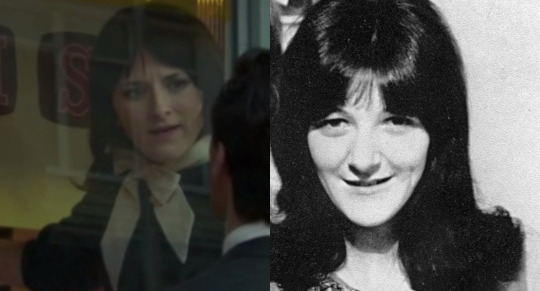
ALICE MARIE O'HANLON as FREDA KELLY

BONUS: Freda makes a cameo appearance in the film
99 notes
·
View notes
Text






Massive counter-protest in Dublin, Ireland, against fascist TERF "Posie Parker." Sept. 16, 2023
Video: https://twitter.com/DubTrans/status/1703047955161157809
#transrightsarehumanrights
Photos: Trans and Intersex Pride Dublin, Gay Community News, Miss Freda Wallace
93 notes
·
View notes
Text
I put together my Christmas wish list for family, which this year included a lot of history and politics books I've been wanting to read. It actually felt good, a low risk way to tell family this is what I stand for. But it's also a good round-up of vaguely liberal if not outright progressive titles that caught my interest, which is a rec list in its own way, so I thought I'd share.
Non-Fiction/RL-ish Books
Built from the Fire: The Epic story fo Tulsa's Greenwood District, America's Black Wall Street (Victor Luckerson)
Countdown 1960: The Behind-the-Scenes Story of the 312 Days That Changed America's Politics (Chris Wallace)
The Girls Who Went Away: The Hidden History of Women Who Surrendered Children for Adoption in the Decades Before Roe v. Wade (Ann Fessler)
The Message (Ta-Nehisi Coates)
Power and Progress: Our Thousand-Year Struggle Over Technology and Prosperity (Daron Acemoglu, Simon Johnson)
The Road to Wisdom: On Truth, Science, Faith, and Trust (Francis S. Collins)
War (Bob Woodward)
White Poverty: How Exposing Myths About Race and Class Can Reconstruct American Democracy (William J. Barber)
And the more fannish ones:
The Fall of Numenor: And Other Tales from the Second Age of Middle-earth (J.R.R. Tolkien)
A Hobbit, a Wardrobe and a Great War: How J.R.R. Tolkien and C.S. Lewis Rediscovered Faith, Friendship, and Heroism in the Cataclysm of 1914-18 (Joseph Loconte)
The Language of the Night: Essays on Writing, Science fiction, and Fantasy (Ursula K. LeGuin)
Norse Mythology (Neil gaiman)
A Place Called District 12: Appalachian Geography and Music in the Hunger Games (Thomas W. Paradis)
The Road to Middle-Earth: How J.R.R. Tolkien Created a New Mythology (Tom Shippey)
A Secret Vice: Tolkien on Invented Languages (Ed. Dimitra Fimi)
Star Trek: Open a CHannel: A Woman's Trek by Nana Visitor
Tolkien and the Modernists: Literary Responses to the Dark New Days of the 20th Century (Theresa Freda Nicolay)
And finally, some charity groups I suggested family and friends donate to, all of which are doing work near to my heart:
Carolinas Care Partnership [an LGBT support group around here, particularly focused on housing access, health care and therapy access, especially for people affected by HIV/AIDS but not exclusively]
Life After Hate [supporting people leaving far-right and white nationalist groups]
NC Immigrant Solidarity Fund [they do financial grants for families facing deportation, also legal and social support for all kinds of recent immigrants]
Pro Publica [doing important independent investigative journalism, and boy is their work vital]
Promising Pages [you've heard of food banks? that, but for books]
Sisterhood of Salaam Shalom [doing good work to build Jewish-Muslim solidarity, The Kid and I particularly like that they're woman-centric and spotlight some lesser-known voices]
Sojourners [a good general left-leaning evangelical group, good at producing journalism and educational resources for *cough* less progressive evangelicals, they're good at speaking that community's language]
3 notes
·
View notes
Text
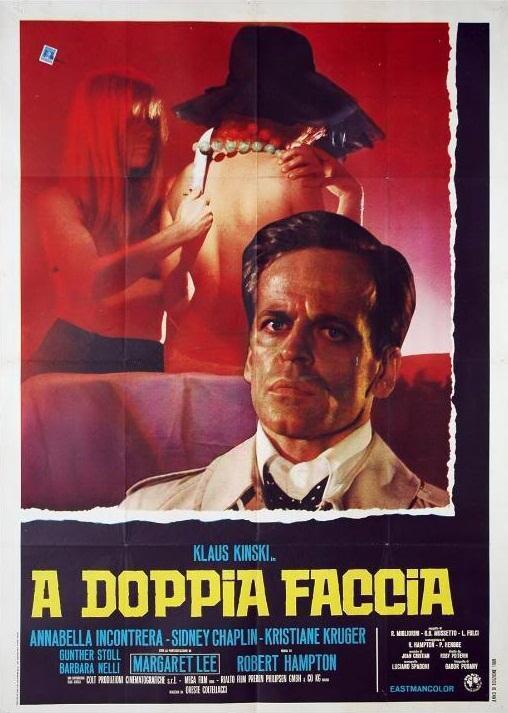

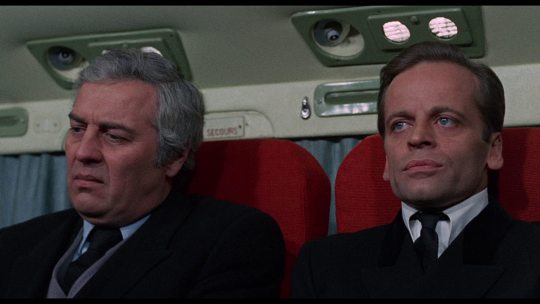
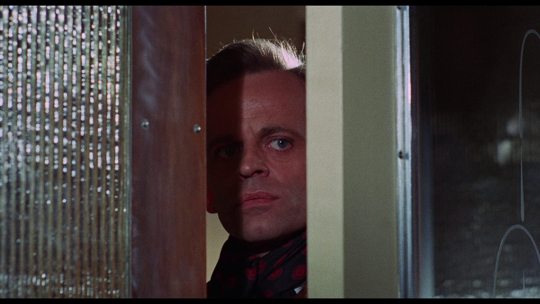
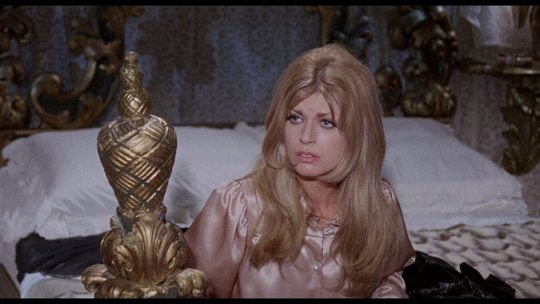



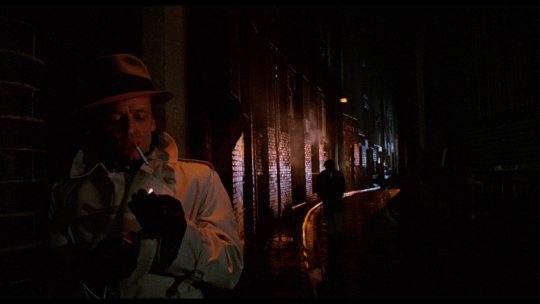
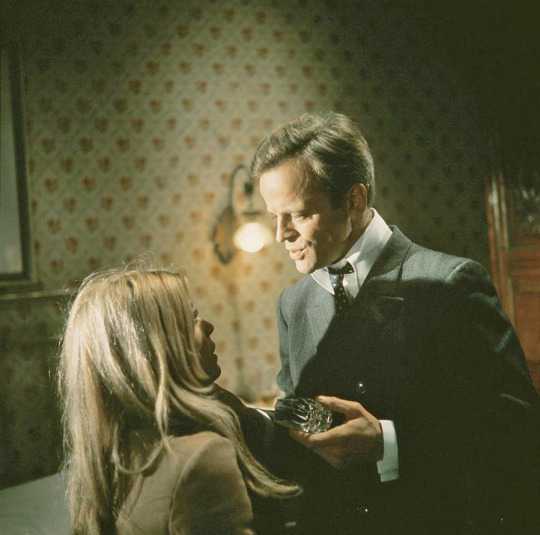
A doppia faccia (Double Face, 1969)
"Look, you need to tell me everything. I'm tired of all this reticence, insinuation and mystery! Tell me what you know."
#a doppia faccia#double face#Das Gesicht im Dunkeln#italian cinema#west german cinema#Riccardo Freda#Paul Hengge#klaus kinski#Christiane Krüger#Günther Stoll#annabella incontrera#sydney chaplin#Barbara Nelli#margaret lee#Carlo Marcolino#Luciano Spadoni#Ignazio Dolce#nora orlandi#edgar wallace#an Italian west german coproduction and loose adaptation of an Edgar Wallace property; one of a series made by the German Rialto Film#production company. director Freda (who had been responsible for I Vampiri a decade earlier‚ Italy's first sound horror film) worked from a#story initially set up by one of his successors‚ Lucio Fulci‚ tho a series of rewrites changed the film into something very different (and#bitterly disliked by Fulci). Freda was also responsible for getting Kinski onboard‚ tho this didn't translate into a good working#relationship: the two hated one another and Freda dubbed the notoriously difficult Kinski as the Crown Prince of Assholes#anyway. this is a minor giallo krimi blend with some outrageously cheap production elements and dismal special fx‚ but the plot (despite#the numerous rewrites) is actually kind of solid. the connection to Wallace is p much entirely manufactured but that's ok#it's kind of in keeping with the man's legacy; most Wallace adaptations post 1960 are in name only potboilers and this is really no#different (excepting the Italian connection).
10 notes
·
View notes
Text










DOUBLE FACE (1969), dir. Riccardo Freda
#double face#a doppia faccia#das gesicht im dunkel#riccardo freda#klaus kinski#margaret lee#christiane krüger#italian movies#movies#edgar wallace#60s#yessferatu
4 notes
·
View notes
Text
The Drip & The Click
The Click & The Drip are two separately staged performance pieces using a syringe driver and a metronome.
“Time. Life giving and life taking away. The medical intervention and the slowing heartbeat. The drip, the click. The soft made severe. The click, the drip. The physical action is never forever. Some echo through the universe that might return.’‘ Freda Wallace 2021
The Drip -A syringe driver releases a droplet of water onto a drum skin at a rate of 60bpm (variable). This gentle sound is amplified through a Delay-Overdrive-Reverb effect chain. The performance lasts as long as the 100ml syringe allows.
youtube
The Click - A metronome is set to around 120bpm and sent through a Delay-Overdrive-Reverb effect chain. The performance lasts as long as the coiled spring inside the mechanism allows. It can be 'revived’ and continue for anther set time.
youtube
Photos show the system and recording technique.


Recordings and reconsiderations for dancefloor using Renoise.
Needle Factory · The Click & The Drip
Time. Life giving and life taking away. The medical intervention and the slowing heartbeat. The drip, the click. The gentle made brutal. The click, the drip. The physical action is never forever. Some echo through the universe might return.
5 notes
·
View notes
Text
The Head -- It Just Won’t Stay Dead
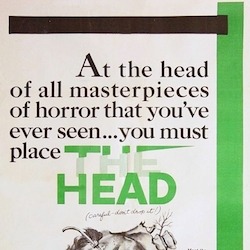
In the early 1960s, the overwhelming majority of European horror films imported to the United States were either British or Italian, the British films being easily understood and the Italian ones frequently pretending to be of British origin. Examples of French horror were rare (odd for a country whose cinema was so rooted in the fantastique), reaching an early apex with Georges Franju’s Eyes Without a Face (1960), which came to the US in a well-done English dub called The Horror Chamber of Dr. Faustus during the Halloween season of 1962.
Seldom paid much attention in retrospectives of this fertile period in continental horror cinema is a rare German example, Die Nackte und der Satan (“The Naked and the Devil,” 1959), which came to the US retitled The Head almost exactly one year before the arrival of the Franju masterpiece. Critics like to refer to The Head as “odd” and “atmospheric,” words that seem to disregard deeper consideration, never really coming to terms with it as anything but a sleazy shock trifle. However, it was in fact the product of a remarkable and rarely equaled concentration of accomplished patrimonies.
Consider this: The Head starred the great Swiss actor Michel Simon, renowned for his roles in Jean Renoir’s La Chienne and Boudu Saved From Drowning; it was directed by the Russian-born Victor Trivas, returning to his adopted homeland for the first time since directing Niemandsland (1932, aka No Man’s Land or Hell On Earth), a potent anti-war statement that was all but obliterated off the face of the earth by the Nazis when he fled the country, and who furthermore had written the story upon which Orson Welles’ The Stranger (1946) was based; it was photographed by Georg Krause, whose numerous international credits include Stanley Kubrick’s Paths of Glory (1957); its sets were designed by Hermann Warm, the genius responsible for such German Expressionist masterpieces as Robert Weine’s The Cabinet of Dr. Caligari (1919), Fritz Lang’s Destiny (1921), as well as Carl Dreyer’s The Passion of Joan of Arc (1928) and Vampyr (1932), and its score is a wild patchwork of library tracks by Willy Mattes, the Erwin Lehn Orchestra, and a group of avant garde musicians known as Lasry-Baschet, who would subsequently lend their eerie, ethereal music to Jean Cocteau’s The Testament of Orpheus (1960). If all this were not enough, The Head was also filmed at the Munich studios of Arnold Richter, the co-founder of the Arri Group, innovators of the famous Arriflex cameras and lenses.
Though made after the 1957 horror breakthroughs made in Britain and Italy (Terence Fisher’s The Curse of Frankenstein, and I vampiri, co-directed by Riccardo Freda and Mario Bava), The Head represented a virtual revolutionary act in postwar Germany, where horror was then considered a genre to avoid. The project was proposed to Trivas by a young film producer named Wolfgang C. Hartwig, head of Munich’s Rapid-Film, whose claim to fame was initiating a niche of exploitation cinema known as Sittenfilme – literally “moral movies” – which, like many American exploitation films of the 1930s, maintained a higher, judgmental moral tone while telling the stories of people who slipped into lives of vice (prostitution, blackmail, drug addiction), their sordid experiences always leading them to a happy or at least bittersweet outcome. Though it goes quite a bit further than either Britain or Italy had yet gone in terms of sexualizing horror, The Head nevertheless checked all the boxes required for Sittenfilme and was undertaken by Hartwig in early 1959 as Rapid-Film’s most prestigious production to date.
After the main titles are spelled out over an undulating nocturnal fog, the story begins with a lurker’s shadow passing along outside the gated property of Prof. Dr. Abel. With its round head and wide-brimmed hat, it looks like the planet Saturn from the neck up. When this marauder pauses to pay some gentle attention to a passing tortoise, we get our first look at the film’s real star - Horst Frank, just thirty at the time, his clammy asexual aura topped off with prematurely graying hair and large triangular eyebrows that seem carried over from the days of German Expressionism. More bizarre still, he later gives his name as Dr. Ood, whose explanation is still more bizarre: at the age of three months old, he was orphaned, the sole survivor of a cataclysmic shipwreck .
“That was the name of the wrecked ship,” he explains. “S.S. Ood.”
The ambiguous Ood takes cover as another late night visitor comes calling: a hunchbacked woman wearing a nurse’s habit as outsized as an oxygen tent. This is Sister Irene Sanders (the screen debut of Karin Kernke, later seen in the Edgar Wallace krimi The Terrible People, 1960). Though Irene cuts a figure as ambiguous and unusual as any Franju ever filmed, she owes her greatest debt to Jane Adams’ hunchbacked Nina in Erle C. Kenton’s House of Dracula (1945). As with Nina, Irene lives in the hope that her deformity can be eradicated by the skill of a brilliant surgeon.
When Irene leaves after meeting with Dr. Abel, Ood presents himself with the written recommendation of a colleague he previously, supposedly, assisted. A burly old walrus of a man, Abel (Michel Simon) already has two younger associates, Dr. Walter Burke (Kurt Müller-Graf, “a first class surgeon”) and the handsome, muscular Burt Jaeger (Helmut Schmid), who hasn’t been quite the same since an unexplained brain operation. Both associates share a creative streak; Burke is also “an excellent architect, [who] designed this house,” while Jaeger “designed my special operating table; it allows me to work without assistants.” (So why does he have two of them? With names that sound the same, no less!) Given the high caliber of Hermann Warm’s talent as a production designer, Burke and Burt together are every bit as skilled in architecture as was Boris Karloff’s Hjalmar Poelzig in Edgar G. Ulmer’s The Black Cat (1934). The main floor of Abel’s sprawling house is dominated by a vast spiral stairwell, striking low-backed furniture, a mobile of dancing palette shapes, and an overpowering wall reproducing Leonardo da Vinci’s “The Virtuvian Man.” Down in the lab, Burt’s robotic surgical assistant looks as if it might have been conceived by the brain responsible for the Sadean mind control device in Jess Franco’s The Diabolical Dr. Z (1965) - a film that, along with Franco’s earlier The Awful Dr. Orlof (1962), seems considerably more indebted to Trivas on renewed acquaintance than to Franju. The film was shot in black-and-white and at no point inside Abel’s abode do the silvery, ivory surfaces admit even the possibility of pigment.
Adding to its effect, the music heard whenever the film cuts back to Abel’s place is anything but homey. It consists of a single, sustained electric keyboard chord played in a nightmarish loop that seems to chill and vibrate, its predictable arc punctuated now and again with icy spikes of cornet. Though I don’t recall reading any extensive discussion of the film’s music, The Head represents what is surely the most important advance in electronic music in the wake of Louis & Bebe Barron’s work on Forbidden Planet (1956). Though the film’s music credits list bandleader Willy Mattes, Jacques Lasry and the Edwin Lehr Orchestra with its music, the most important musical credit is displaced. Further down the screen is the unexplained “Sound Structure, Lasry-Baschet.”
Lasry-Baschet was a musical combination of two partnerships – that of brothers Francois and Bernard Baschet, and the husband-and-wife team of Jacques and Yvonne Lasry. The two brothers were musicians who played astonishing instruments of their own invention, like the Crystal Baschet (played with moistened fingers on glass rods), the Aluminum Piano, the Inflatable Guitar, the Rotating Whistler, and the Polytonal Percussion. The Lasry couple, originally a pianist and organist, began performing with the Baschets on their unique devices in the mid 1950s. Some of the music they produced during this period is collected on the albums Sonata Exotique (credited to Structures for Sound, covering the years 1957-1959) and Structures For Sound (credited to the Baschet Brothers alone, 1963), a vinyl release by the Museum of Modern Art. These and other recorded works can be found on YouTube, as well; they are deeply moving ambient journeys but I cannot say with certainty that they include any of the music from The Head. That said, the music they do collect is very much in its macabre character and would have also fit very well into Last Year At Marienbad (1961) or any of Franju’s remarkable films.
When Ood meets with Abel and expresses his keen interest in experimental research, the good doctor mentions that he has had success copying “the recent Russian surgery” that succeeded in keeping the severed head of a dog alive – however, his moral code prevents him from taking such experimentation still further. After leaving Abel, Ood finds his way to the Tam-Tam Club, a nightspot where a life-sized placard promotes the nightly performances of “Tam-Tam Super Sex Star Lilly.” This visit initiates a parallel storyline involving Lilly (Christiane Maybach), who supplements her striptease work as an artist’s model, and is the particular muse of the brooding Paul Lerner (Dieter Eppler), a man of only artistic ambition, much to the annoyance of his father, a prominent judge who wants him to study law. Maybach reportedly won her role the day before she began filming. According to news reports of the day, the actress originally cast – the voluptuous redhead Kai Fischer – had signed on to play the part, after which producer Hartwig decided she must also appear nude. Fisher sued Hartwig for breach of contract in March 1959 and he was sentenced to pay out a compensatory fee of DM 4,000 – in currency today, the equivalent of about $35,000. As it happens, Christiane Maybach doesn’t appear nude in the film’s final cut either.
The English version of The Head opens with a credit sequence played out over a shot of the full moon taken from near the climax of the picture. Unusually, the German Die Nackte und der Satan doesn’t present its title onscreen until Lilly is ready to go on. It’s superimposed with inverted commas on pleated velvet curtains that suddenly rise, revealing a stage adorned by a single suit of armor. Lilly dances out, stage right, garbed in a medieval conical hat, scarves, a bikini and a black mask, performing her dance of the seven veils around the impervious man of metal. She only strips down to her bikini but her dance ends with her in the arms of the armor we assumed empty, which tightly embraces her as its visor pops open, revealing a man’s face wearing skull makeup. Lilly screams, the lights go out, and the house goes wild with applause – a veritable blueprint for the striptease of Estella Blain’s Miss Death in Franco’s The Diabolical Dr. Z (1965).
The music heard during the film’s Tam-Tam Club sequences was recorded by the Erwin Lehn Orchestra, evidently with Jacques Lasry on piano, though its emphasis on brass is its outstanding characteristic. Erwin Lehn was a German jazz musician and composer who established the first German Big Band Orchestra for South German Radio. Brass was a major component of his sound – indeed, he made pop instrumental recordings credited to The Erwin Lehn Beat-Brass. You can find their album Beat Flames on YouTube, as well.
Backstage, the beautiful Lilly is a nagging brat, drinking and flirting with patrons while berating Paul’s lax ambitions on the side. Dieter Eppler, a frequent player in the Edgar Wallace krimis and also the lead bloodsucker in Roberto Mauri’s Italian Slaughter of the Vampires (1964), makes for inspired casting; he looks like a beefier, if less dynamic Kirk Douglas at a time when Vincente Minnelli’s Lust For Life (1956) would have still been in the minds of audiences.
Once Ood joins the payroll, Dr. Abel confesses that his heart is failing rapidly. The only means of saving himself and perpetuating his brilliant research is by doing the impossible – that is, transplanting the heart from a donor’s body into his own, which he insists is possible given his innovation of “Serum X.” What Abel could not foresee was that his own body would die during the procedure. Ood tells Burke that the only way to save Abel’s genius is to keep his head artificially alive, which his associate rejects uncatagorically, pushing Ood over the edge into murder. Then Ood proceeds with the operation, working solo with Jaeger’s robo-assistant passing along surgical tools as he needs them. When Abel revives, Ood breaks his news of the procedure gently by holding up a mirror and exclaiming that he’d had “one last chance – to perform the dog operation on your head!” Abel screams in revulsion of what he has become. The conciliatory Ood gently cautions him, “Too much emotion can be extremely dangerous now.”
The severed head apparatus is a simple yet ingenious effect, shot entirely in-camera and credited to Theo Nischwitz. It utilizes what is generally known as a Schufftan shot, a technique made famous by spfx shots achieved by Eugen Schufftan for Fritz Lang’s Metropolis (1926). Essentially, Michel Simon was seated behind a pane of mirrored glass with all the apparatus seen from his neck up. The silvering on the reverse portion of the mirror was scraped away, allowing the camera to see through to Simon and the apparatus while reflecting the apparatus arrayed below his neck, in position for the camera to capture its reflection simultaneously. In at least one promotional photo issued for the film, Simon’s shoulders can be transparently glimpsed where they should not be.
Irene returns to meet with Dr. Abel and is surprised to find new employee Ood now alone and ruling the roost. When he offers to perform her operation himself, she instinctively distrusts and fears him – but is reassured after hearing Abel’s disembodied voice on the house’s sophisticated intercom.
After the killing and burial of Burke, whose body Bert Jaeger later finds thanks to the barking of Dr. Abel’s kenneled hounds (a detail that one imagines inspired Franju’s use of a kennel in Eyes Without a Face), the film introduces the dull but nevertheless compulsory police investigation, headed by Paul Dahlke as Police Commissioner Sturm. Sagging interest is buoyed by a surprise twist: when Dr. Ood returns to the Tam-Tam Club and asks the perpetually pissy Lilly to dance, he refers to her in passing as “Stella,” prompting her to recognize him as “Dr. Brandt” (the scorecard now reads Burke, Bert and Brandt), who has inside knowledge pertaining to her poisoning of her husband! Given that his earlier writing projects include Orson Welles’ The Stranger and the bizarre Mexican-made Buster Keaton item Boom In the Moon (also 1946), in which an innocent shipwrecked sailor is rescued from his castaway existence only to find himself confused with a serial killer, Victor Trivas would seem partial to characters who live double lives.
Though Ood/Brandt’s aura is basically asexual through the first half of the film, the second half requires him to take an earthier interest in the female bodies finding their way into his hands. He takes the already tipsy Lilly/Stella home for a drink and some mischief.
“What’s in the glass?”
“Drink it and find out.”
“I hope it’s not poisoned.”
“That’s not my specialty, is it?”
Lilly/Stella becomes the necessary auto parts for Irene’s pending operation. In a nicely done montage, the film dissolves from Lilly’s unconscious body to a glint of light off the edge of Ood’s poised scalpel. It cuts to a curt zoom into Abel’s scream at being forced to watch a procedure he abhors, then a dissolve from his mouth to the spinning dials of a wall clock, followed by some time-lapse photography of cumulous clouds unfurling from an open sky, before Irene awakens in her recovery room with a decorative choker around her throat. She is able to gain her feet and covers her nude body in a sheet. She finds Ood lounging in Abel’s old office. He walks toward her as the sheet tumbles off her bare shoulders.
“How do you feel?” he asks.
“Well, I… I’ve a strange kind of feeling, as if my whole body were changed, as if my body didn’t want to do what I wished.”
Therefore, Ood has not only taken away her deformity but her responsibility for her actions, as well. Though she has never smoked before, she craves a cigarette. As Ood lights one for her, her wrap falls further, undraping her entire bare back and thus exposing a birthmark on her left shoulder blade that becomes an important plot point. Ood confesses she’s been unconscious for 117 days, during which time he has passed the time by performing numerous enhancing procedures on her inert body. When he compliments her superb figure, she self-consciously covers her legs and recoils from him.
“Why run from everything you desire?” he asks. “You can’t run from yourself.”
He draws Irene into a surprising deep kiss, which – to her own apparent horror - she returns. Ood then tries to take things further but she refuses. After a brief (and surprisingly curtailed) attempt at abduction, he releases Irene, who dresses in a black cocktail dress and heels left behind by Lilly and returns to the humble apartment she kept in her previous life, where a full-length mirror stands covered. In a scene considerably shortened by the US version, she rips the cover away in a movement evocative of a symbolic self-rape, and glories in her new reflection. The score turns torrid, brassy, and trashy as she admires her shapely terrain, fondling the curves of her breasts and hips in a prelude to a gratifying personal striptease. She then goes to her bed, where she tries on an old pair of slippers; she laughs and kicks them away, delighted at how small her feet now are. When she wakes the next morning, she finds a pamphlet for the Tam-Tam Club in Lilly’s old purse, which leads her body back to its former place of employ. When she arrives, another striptease artist is working onstage with a bed. This performance appears to burlesque Irene’s own motions from the night before; she kicks off one of her shoes as Irene had done.
From the moment she walks into the club, still wearing Lilly’s clinging black dress, Irene evokes a black widow, a kind of Alraune – the femme fatale of Hanns Heinz Ewers’ novel, filmed in 1930 with Brigitte Helm and in 1952 by Hildegarde Knef. Like Alraune, she’s the beautiful creation of a mad scientist’s laboratory, but unnatural. In this case, she’s not really a soulless artificial being out to destroy men; on the contrary, she is soulful, starving for some insight into who she is, what she is. In this way, she particularly foreshadows Christina, the schizophrenic subject of Baron Frankenstein’s “soul transplant” played by Susan Denberg in Terence Fisher’s Frankenstein Created Woman (1966).
She quickly attracts Paul’s artist’s eye, just as the now-topless dancer onstage swirls into a swoon on a prop bed – unconsciously mimicking Lilly at the only time she ever saw her, when Ood gave her a sneak peek at the unconscious woman on his living room couch. She asks about Lilly, whom Paul mentions has been dead now for three months, her body (in fact, Irene’s former body) found maimed beyond recognition on some railroad tracks. He asks her to dance, but Irene refuses, as she has never danced, never been asked to dance before. But he insists and they both discover that she can: “You must be a born dancer!”
Beautiful and irresponsible, she allows herself to follow Paul back to his studio, where drawings of Lilly are displayed. Paul asks to draw her, and when she turns her back to bare her shoulders, he recognizes Lilly’s beauty mark. She flees from the apartment and confronts the unflappable Ood.
“You must have grafted her skin on my body!”
In the movie’s most hilarious line, he fires back, “You have a poor imagination!”
She rejects his true account of the procedure and demands to see Dr. Abel, so Ood takes her down to the lab for a personal confirmation from the man himself. Ashamed to be seen this way, Abel pleads with Irene to disconnect him from the apparatus. She is driven away before she can accomplish this, and tries to shut away the horror of the truth that’s been revealed by losing herself in her new relationship with Paul – but the old question arises: Does he love her for her body or her mind? There seems to be one answer when he first kisses her, and another and his lips venture further down her front.
I should leave some things to be discovered by your own viewing of the film, but it demands to be mentioned that Irene – the triumphant climax of Ood’s genius, so to speak – actually survives at the end of the film to live happily ever after. Think about this. This is something that would have been considered unacceptable in any of Hammer’s Frankenstein films at the time – indeed, through the following decade. So, although Ood is ultimately destroyed (you’ll need to see it to find out how), the mad science he propounds is actually borne out. It’s left up to Paul and Irene, as they walk off together toward a new tomorrow, how they will manage to live with the fact that the two of them are in fact a ménage à trois. Will they keep the details of her existence a secret? Will medical science remain ignorant? Should they ever have any, what will they tell their kids?
The Head was hardly the first word on severed heads in horror entertainment. In his own admiring coverage of the film, Euro Gothic author Jonathan Rigby likens the film to the story of Rene Berton’s 1928 Grand Guignol play L’Homme qui à tue la mort (“The Man Who Killed Death”): “There, Professor Fargus revived the guillotined head of a supposed murderer and the prosecutor lost his mind when the head continued to plead his innocence.” Earlier such films would include Universal’s Inner Sanctum thriller Strange Confession (1945, in which a never-seen severed head is a main plot point), The Man Without a Body (1957) and The Thing That Couldn’t Die (1958), the latter two proving that the concept was actually trending at the time The Head was made. Also parenthetically relevant would be She Demons (1958), which involves the nasty experiments of a renegade Nazi scientist living on an uncharted tropical island, who removes the “beauty glands” of native girls to periodically restore his wife’s good looks. Though The Head wasn’t the first of its kind, many of the traits it introduced would surface in similar films that followed – not only in Franju’s Eyes Without A Face or Franco’s The Awful Dr. Orlof and The Diabolical Dr. Z, but also in Anton Giulio Majano’s Italian Atom Age Vampire (1960), Chano Urueta’s The Living Head (1963), and most conspicuously in Joseph Green’s The Brain That Wouldn’t Die, not released until 1962 though filmed in 1959, some six months after The Head.
It must be mentioned that the film’s unusual quality did not go unrecognized by its American distributor. Trans-Lux Distributing Corporation advertised the film that took a most unusual approach to selling a horror picture. The ads did not promise blood, or that your companion would jump into your lap, or shock after shock after shock. Instead, Trans-Lux promised that “At The Head of All Masterpieces of Horror [my italics] That You’ve Ever Seen… You Must Place… The Head.”
Of course it was an overstatement, but the size of its overstatement would seem to have narrowed appreciably with time.
So why has The Head, with its rich pooling of so much European talent, been so neglected?
A key reason may be that horror fans like their actors and directors to maintain a certain consistency, a certain fidelity to the genre. Horst Frank (who died in 1999) would appear in other horror films, but never again played a lead; he pursued his career as a character actor and singer, maintaining a career on the stage and keeping close to home, never making films off the continent or appearing in productions originating from England or America. After The Head, Victor Trivas made no more horror films. The other four features he made had been produced a quarter century earlier and the majority are impossible to see in English countries. Those who remembered him for Niemandsland would have considered The Head an embarrassment, an unfortunate last act. It wasn’t quite a last act, however. The following year, he returned to America, where he sold his final script to the Warner Bros. television series The Roaring 20s, starring Dorothy Provine. Though the show avoided fantasy subjects, it was a voodoo-themed episode entitled “The Fifth Pin,” directed by Robert Spaar and televised during the series’ first season on April 8, 1961. The guest stars included John Dehner, Rex Reason, Patricia O’Neal and, surprisingly, beloved Roger Corman repertory player Dick Miller. Trivas died in New York City in 1970, at the age of 73.
The English version of The Head is considered to be a public domain title and has been available from Alpha Video, Sinister Cinema and other PD sources. This version was modestly recut to create a new main title sequence and to remove certain erotic elements unwelcome to its target audience in 1961. Happily, a hybrid edition – which, in a fitting fate, grafts the English dub onto the original uncut version from Germany – was recently made available for viewing on YouTube.
In the immediate wake of The Head, producer Wolf C. Hartwig pushed another erotic horror film into production, Ein Töter hing in Netz (“A Corpse Hangs in the Web,” 1960). Scripted and directed by Fritz Böttger, the film (Böttger’s last as a director) was first released in America as It’s Hot In Paradise (1962), sold as a girlie picture with absolutely no indication of its horror content. It was later reissued in 1965 as Horrors of Spider Island (1965). Under any of its titles, the film is notably lacking all of the artistic and aesthetic pedigree that made its predecessor so special and, indeed, influential.
Sixty years further on, The Head warrants fuller recognition as a spearhead of that magic moment on the threshold of the 1960s when so-called “art cinema” began to be fused with so-called “trash cinema,” leading to a broader, wilder, more adult fantastique.
by Tim Lucas
[1] Victor Trivas’ Niemandsland may be viewed online at https://www.youtube.com/watch?v=S-4XhNMWoyw
[2] Rapid-Film’s later successes would include the German film that was subsequently converted into Francis Ford Coppola’s directorial debut (The Bellboy and the Playgirls, 1962), Ernst Hofbauer’s Schoolgirl Report film series (1970-80), and Sam Peckinpah’s Cross of Iron (1977).
[3] You can see Lasry-Baschet perform and be interviewed in a French newsreel from January 1961 on YouTube: https://www.youtube.com/watch?v=awaFd6gArLg&t=46s.
[4] Well, as “recent” as 1940, when footage of a supposedly successful Soviet resuscitation of a dog’s severed head was included in the grisly 20m documentary Experiments In the Revival of Organisms. The operation was performed (and repeated) by Doctors Sergei Brukhonenko and Boris Levinskovsky, making use of their “autojektor,” an artificial heart/lung machine not unlike the contraption seen in The Head. A close look at Experiments reveals that it really shows nothing that could not have been faked through means of special effects. (When George Bernard Shaw learned of the Soviet experiment, he’s said to have remarked, “"I am tempted to have my own head cut off so that I can continue to dictate plays and books without being bothered by illness, without having to dress and undress, without having to eat, without having anything else to do other than to produce masterpieces of dramatic art and literature.") Experiments In The Revival of Organisms has been uploaded to YouTube: https://www.youtube.com/watch?v=ap1co5ZZHYE.
[5] Rigby, Jonathan. Euro Horror: Classics of Continental Horror Cinema (London: Signum Books, 2017), p. 79.
[6] Joseph Green also worked in motion picture distribution and later formed Joseph Green Pictures, which specialized in spicy imported pictures, some from Germany. It’s possible that he saw the Trivas picture when it was still seeking distribution in the States. When Ostalgica Film released The Head on DVD in Germany under its Belgian reissue title Des Satans nackte Sklavin (“The Devil’s Naked Slave”), the disc included The Brain That Wouldn’t Die as a bonus co-feature.
[7] A fine quality homemade experiment, it runs 91 minutes 47 seconds and can be found at: The Head (Die Nackte und der Satan) 1959 Sci-Fi / Horror HQ version!.
6 notes
·
View notes
Text
Gregory Abbott

Gregory Joel Abbott (born April 2, 1954) is an American singer, musician, composer and producer. Although he continues to record to date, he is best known for his singles in the mid-1980s including his platinum single, "Shake You Down", from his 1986 debut album.
Biography
Early life
Abbott was born in Harlem, New York City, New York, United States. Abbott's parents came from Venezuela and Antigua. During his early years, Abbott's mother taught him how to play piano and encouraged him to develop vocally. Before his career as a musician, Abbott studied psychology at University of California, Berkeley, and creative writing at Stanford; where he won a Wallace Stegner fellowship. Abbott taught English at University of California, Berkeley.
Teaching career
Abbott was a professor of English.
Music career
One of Abbott's first opportunities in his studio was an album for an independent record label, which gave him the opportunity to do a duet with Whitney Houston. Continuing on, Abbott produced for the group EQ on Atlantic Records. In 1986, Abbott released his first solo album, Shake You Down. The title track for the album was a success, going platinum and topping the Billboard Hot 100. The album's second single, "I Got The Feelin’ (It's Over)", reached Number 5 on the R&B chart. With the strength of its singles, the album propelled to platinum status and earned Abbott several awards.
Internationally, Abbott carried much success, winning first prize at the Tokyo Music Festival. The title track of his second album, "I'll Prove It To You" which was released in 1988, was featured on a Japanese movie soundtrack. In Belgium, he performed with Princess Stephanie of Monaco. Over the years much of his new music has been released via singles on his own Mojo Man Entertainment label. Abbott has continued with his R&B sound but, in addition, he has added a Caribbean/soul feel as well. In 2011, an album entitled Drop Your Mask was released; and Abbott continues to release new singles a few times a year.
Personal life
Abbott was married to American singer Freda Payne from 1976 until 1979. Payne and Abbott had a son, Gregory Abbott, Jr., who was born on September 19, 1977, Payne's 35th birthday. In 1979, it was reported that his wife Payne was suing for divorce.
Discography
Albums
1986 – Shake You Down (Columbia Records)
1988 – I'll Prove It to You (Columbia Records)
1996 – One World! (Musik International)
1998 – Super Hits (Legacy Recordings)
2002 – Eyes, Whispers, Rhythm, Sex... (Musik International)
2005 – Dancing the Inner Realm... (Musik International-Mojo Man)
2006 – Rhyme and Reason
2011 – Anniversary Edition of "Shake You Down" (Friday Music)
2012 – "Drop Your Mask"
SinglesMajor singlesOther singles
1988 – "I'll Prove It To You"
1988 – "Let Me Be Your Hero"
1994 – "Handyman"
1994 – "Do The Caribbean"
2002 – "Sexual"
2003 – "Three Little Birds" Duet with Phoebe Snow
2007 – "Middle of Harlem"
2007 – "Shake You Down" (Re-Make)
2009 – "Baby Mama"
2011 – "Soul Food"
2011 – "Eyes"
2012 – "Island Woman"
2012 – "Sugar Sugar"
2013 – "Rock You Gently"
2014 – "Every Little Step"
2014 – "Have Yourself A Merry Little Christmas"
2015 – "How Deep Is Your Love"
2015 – "Stir It Up"
2016 – "When Something is Wrong With My Baby"
2017 – "Deja Vu"
2017 – "On and On"
2018 – "Stop, Look, Listen (To Your Heart)"
2019 – "My Heart Has Found a Home"
2020 - “Searchin’ 4 the 1”
1 note
·
View note
Text
Masterlist!
This is a full list of all the requested and specially themed moodboards I have made. If I missed anything, or if any links are wrong or missing, please let me know! 💖🙏💖
((I’ve been having some technical issues getting certain links to work on desktop, so if there are any problems, please let me know!))
Compatibility and Relationship Moodboards
Leo x Scorpio
Taurus x Taurus
Virgo Sun, Virgo Moon, Virgo Rising x Cancer Sun, Leo Moon, Capricorn Rising
Capricorn Sun, Sagittarius Moon, Pisces Rising, Capricorn Mercury, Sagittarius Venus, Pisces Mars x Aquarius Sun, Cancer Moon, Aquarius Mercury, Pisces Venus, Scorpio Mars
Female Aries x Male Cancer
Butch Female Aries x Femme Female Scorpio
Female Taurus x Male Aries
Female Gemini x Male Sagittarius
Female Gemini x Male Cancer
Female Gemini x Male Leo
Female Cancer x Male Gemini
Female Cancer x Male Sagittarius
Female Cancer x Male Capricorn
Female Cancer x Male Virgo
Female Cancer x Male Pisces
Female Leo x Male Aquarius
Female Virgo x Male Leo
Female Virgo x Male Sagittarius
Female Virgo x Male Scorpio
Female Virgo x Male Aries
Female Libra x Male Aquarius
Female Libra x Male Virgo
Female Libra x Female Aquarius
Female Scorpio x Male Taurus
Female Scorpio x Male Leo
Female Sagittarius x Male Capricorn
Female Sagittarius x Male Leo
Female Capricorn x Male Cancer
Female Aquarius x Male Leo
Female Aquarius x Male Scorpio
Female Aquarius x Male Gemini
Female Aquarius x Male Capricorn
Female Aquarius x Male Virgo
Female Aquarius x Female Aquarius
Female Aquarius x Female Sagittarius
Female Pisces x Male Gemini
Female Pisces x Male Aries
Female Pisces x Male Leo
Male Aries x Male Gemini
Male Virgo x Male Pisces
Male Aquarius x Male Sagittarius
Male Capricorn x Male Gemini
Male Cancer x Male Cancer
Male Gemini Sun, Sagittarius Moon, Leo Rising x Male Sagittarius Sun, Pisces Moon, Virgo Rising
Female Taurus-Gemini Cusp x Male Capricorn-Aquarius Cusp who are too shy to admit that they like each other
Female Hufflepuff x Female Slytherin
Personality Moodboards
Catholic, Lesbian, Ravenclaw, Fire-Ox, Aries, Gemini Moon, Leo Rising, Capricorn Sun, Vitiligo Female
Cancer Sun, Aquarius Moon, Capricorn Rising, Supine, Neutral Good, Oak the Stabilizer, Hufflepuff, ISFJ(-T)
Sagittarius Sun, Aries Moon, Aries Rising + ENTP
Pisces Sun, Pisces Moon, Leo Rising, With Dominant Aries
Slytherin Libra Sun, Taurus Moon, Taurus Rising
Gryffindor Aries Sun, Cancer Moon, Gemini Rising
Scorpio Sun, Virgo Moon, Libra Rising
Scorpio Sun, Leo Moon, Libra Rising
Sagittarius Sun, Cancer Moon, Sagittarius Rising
Sagittarius Sun, Aries Moon, Taurus Rising
Gemini Sun, Leo Moon, Scorpio Rising
Gemini Sun, Scorpio Moon, Aries Rising
Pisces Sun, Gemini Moon, Gemini Rising In Pink
Cancer Sun, Scorpio Moon, Cancer Rising
Cancer Sun, Aries Moon, Capricorn Rising
Cancer Sun, Pisces Moon, Virgo Rising
Virgo Sun, Taurus Moon, Gemini Rising
Virgo Sun, Leo Moon, Pisces Rising
Libra Sun, Taurus Moon, Virgo Rising
Capricorn Sun, Virgo Moon, Aquarius Rising
Capricorn Sun, Aries Moon, Scorpio Rising
Capricorn Sun, Scorpio Moon, Sagittarius Rising
Leo Sun, Scorpio Moon, and Cancer Rising
Fierce Leo Fashionista
Bisexual Slytherin Male
Book Nerd Slytherclaw on the Ace Spectrum
INFJ Libra
INFJ Sagittarius
INFP Gemini
INTP, Cancer, Slytherin
Slytherin Aesthetic
Friendship Moodboards
Scorpio x Cancer Best Friends
Cancer x Leo x Scorpio Best Friends
Female Libra x Female Sagittarius Best Friends
Female Libra x Female Aquarius Best Friends
Female Virgo x Female Aries Best Friends
Female Virgo x Male Libra Best Friends
Female Aries x Male Sagittarius Best Friends
Gemini, Sagittarius and Capricorn Female Best Friends
Adopted Female Bisexual Leo Ravenclaw x Female Aro/Ace Libra Sun, Cancer Moon Slytherin x Male Gay Libra Sun, Libra Moon Hufflepuff Best Friends
Name Moodboards
James
Kai
Dean
Ava
Laila
Amira
Eureka
Solace
Ashleigh
Noah
Hailey
Rui
Gabriella
Henrietté
Alexia
Amber
Rachel
Mikayla
Paula
Magali
Adrienne
Mason
Diana
Jules
Freda
Ollie
Celina
Dante
Lívia
Sienna
Lynn
Natalia
Zander
Leonardo
Katariina
Marina
Yuuka
Max
Chris
Ezra
Agata
Lois
Mark
Kylie
Alicia
Estelle
Alex
Mia
Booker
Lune
Declan
Username Moodboards
wherepeoplehavenoname
lavendertulip
esoteric-champagne
aqua-is-an-alien
pafwu
lesbeannnnnn
star-less-city
takenheadlinesblr
redwards12
fa11ingf1ux
beetle-paws
verbenaluna
toiistr
solitaryomnivore
nosferatuprivilege
jelly-cheesepuffs
astrology-babyy
glossyy-julyy
cowboyjakedillinger
syrxpvania
druid-study
mimibunny46
lazydreamlandblaze
someoneyoudespise
walking-ball-of-anxiety
caffeinatedreader54
happiness-cache
artsy-dreamer
staplerrr
tryingtoohard-noclue
galacticlead
moonllotus
of-stars-and-moon
winterrs-child
li-ionsandtigersandbears
ohoneyno
delicatedamoiselle
cookiescr
twilicat24
angel-ette
aroacelittlemy
somajesticdonki
blissfulthoughts
abigsoftea
thunderstruck-owl-gal
f-1-ux
nightlight-glimmer
paperclip-dragon
manic-pixie-star-child
kylieerinjosiphineparksworld
gabbiisawesome
whisper-yelling
confused-may
withrewings
azureshine
hauntyouinthend
coffeeteenager
needscaffeine
blackthornstele
neonblack22
no-theme-on-this-one
youngchaosflower
downtothe-tee
weird-reading-hole
sisroks
pomesa
nicloetje
azelmathenardier
rayjayo
stefanovalentitty
drarryandharry
im-definitely-hermione-granger
prof-iupin
roonil--wazlib
angel-loki
muggleborngirl
ann-a-lightwood
homaka
anxiousabbozzo
acciowolfstar
remus-and-sirius-lupin
snarkyherondales
asras-badonkadonks
marichatisfam
holy-shit-its-wolfstar
famdommcfanface
itsdestielislifeuniverse
hildaoflorule101
shadows-of-a-life-before
psychocypher666
adriancrevan1827
nocturnalrobots
cloudymels
whose-potato-am-i
sashasthoughtsaretakingover
stuff-of-pi
loneshadow17
whereevenamitho
im-not-an-armrest-im-short
bloody-hell-im-the-fucking-pope
paininmyheart-imalive
nerdyrobot124
sakurastardust
minty-princessgirl
myshortinfinity
chaoticrex
cerulean-bonaparte
dovelyromantic
jojoandcupcakes
the10ne1yweird0
ld0l
punksatanic
life-is-full-of-flowers
lostinmyinsomnia
communist-pickle
nisargasinha
mimiryuukyu
ejays-things
sdewan6
kathrinemccarthy01
small-and-terrible
thefantasticsuperouatgirl
qweklz
ancoraqui
OC Moodboards
Katie Eastburn
Kolo
Z
Wallace Scott
Pride and LGBTQ+ Moodboards
Bisexual Pride!
Bisexual Boy
Pansexual Pride!
Gay Pride!
Gay Positivity!
Introverted MLM + Space
Enchanted Forest MLM Relationship
Trans Pride!
Lesbian Pride!
Lesbian Pride! (With The Blue And Purple Flag)
WLW!
Black and White WLW
WLW Nature Witch
Non-Binary + Yellow
NonBinary + Soft Things
Closeted Bisexual + Pastel Colours
Trans Girls Are Girls!
Lesbian Fairy
Queer and Demigender
Lithromantic and Pansexual
Song and Music Moodboards
Baby by Clean Bandit
Blank Space by Taylor Swift
Sleep Alone by Waterparks
Oxygen by Catfish and the Bottlemen
Colors by Halsey
Animal by Neon Trees
Los Ageless by St. Vincent
Alrighty Aphrodite by Peach Pit
Medusa in Chains by The Fratellis
Cemetery Drive by My Chemical Romance
Green by Cavetown
Hazel by Cavetown
DEVIL by Shinedown
Shy by HUNNY
Tiny Dancer by Elton John
Fred Astaire by San Cisco
Coffin Break by Sopor Aeternus & the Ensemble Shadows
Character Moodboards
Alice from Alice’s Adventures in Wonderland
Melissa Hastings from Pretty Little Liars
Lexa from The 100
Gengar from Pokemon
Magnus Bane from Shadowhunters
William T. Spears from Black Butler
Noriaki Kakyoin from Jojo’s Bizarre Adventure
Steve Rogers from Marvel
Ship Moodboards
Undertaker x William from Black Butler
Taehyung x Jungkook from BTS
Hermione x Ron from Harry Potter
Ginny x Luna from Harry Potter
Shiro x Keith from Voltron
Stimboards (GIF Warning!)
Shiny Mega Gengar from Pokémon
Other Themed Moodboards
Hopeless Romantic
Purple, Blue and Pink
Sky, Moon and Stars
Stag Beetles
Moths
Valentines Day!
Midnight In Tokyo
“Shook”
“What Colour Are Your Socks?“
Vintage Indie
Lust in Red
Primary Colours
Pastel Architecture
Warrior Girl
Mermaid
FFXIV OC
Sex, Drugs & Violence
Nostalgia
Neon Drug Trip
Treasure Every Moment
Pastels + Kitties
Fun Pastel Colours
Inspiration and Motivation
A Splash Of Colour!
Soft Pink
Soft Black and White
Lavender + Orange Boy
Do you dream in colour?
A New Kind Of Magic
Pastel 1970’s
Beautiful Lies in Pink, Black and Orange
Soft Yellow Things
Horror, Plushies, Sweets, Rabbits, Anime and Pastel Goth
Art Is All Around Us
Space
Pop Art
Orange Taurus
Classical Music
Роковая Женщина // Russian Femme Fatale
Snakes!
#Masterlist#moodboard#Aesthetic#aesthetics#moodboard requests#loving-life-loving-lysol's masterlist#<<< tagging so i can find it more easily
20 notes
·
View notes
Text
Secret Room Golden Globe Awards Gifting Suite 2018
Dentro de los Globos de Oro hay muchas celebraciones paralelas. En este caso se trata de la Secret Room Golden Globe Awards Gifting Suite. Viene siendo la habitación secreta de los regalos, o algo así entiendo yo. Tuvo lugar en el hotel SLS de Los Ángeles. Y sin duda fue un evento divertido para reencontrarse de cara a la gran cita de esta noche. Vamos allá!
30. Brooke Lewis.

(more…)
View On WordPress
#alisa reyes#anne-marie johnson#blanca blanco#brianne davis#brooke lewis#celeste thorson#christina deorsa#ciara wilson#dee wallace stone#diary#farrah abraham#freda payne#inspiración#ivana horvat#jessica morris#karlee perez#kate flannery#lela brown#lisa linke#lorielle new#mimi lesseos#moda#patricia de leon#patrika darbo#patty mccormack#renee lawless. molly mccook#robin sydney#sheree wilson#sofia milos#stefan kapici
0 notes
Text
Tom Jones facts: Singer's age, wife, children, real name, net worth and more revealed
Sir Tom Jones is one of the world's most popular entertainers, and has pretty much worked non-stop since the early 1960s.
But where is Sir Tom Jones from and how big is his family? Here are all the big facts about the Welsh icon and The Voice UK coach:
Tom Jones' birth name is Thomas John Woodward.
His parents were Thomas Woodward (1910-1981), a coal miner, and Freda Jones (1914-2003).
He began singing at an early age, at family gatherings, weddings and in his school choir. At 12, he was diagnosed with tuberculosis, and spent "two years in bed recovering".
In March 1957, Tom Jones married his high school girlfriend, Linda Trenchard, when they were expecting a child together, both aged 16.
Linda died on April 10, 2016 at Cedars Sinai Hospital in Los Angeles, after a "short but fierce" battle with cancer.
Has Tom Jones had any other relationships?
Tom Jones has said that he was with up to 250 groupies a year at the height of his fame. His philandering once led wife Linda to physically assault him.
Tom is known to have had affairs with several famous women, including Mary Wilson of the Supremes, TV host Charlotte Laws and former Miss World Marjorie Wallace.
In recent years, he has been linked with Elvis Presley's former wife Priscilla Presley. เล่นบาคาร่า
0 notes
Text
Lupiči paní domácí - „Nejgeniálnější loupež všech dob byla konečně uskutečněna!“
Tak zní podtitul nové komedie s Tomem Hanksem v hlavní roli. Je pravda, že loupež sice byla uskutečněna, ale její strůjci si jejího výtěžku příliš neužijí. V domě svérázné korpulentní paní Munsonové, která pronajímá pokoj, se jednoho dne zjeví neméně svérázný profesor Dorr. Kromě pronájmu pokoje má také nezvyklý zájem o sklep. S několika svými druhy totiž provozuje malý…- Více na https://www.kritiky.cz/filmove-recenze/retro-filmove-recenze/2019/lupici-pani-domaci-nejgenialnejsi-loupez-vsech-dob-byla-konecne-uskutecnena/
#Retro filmové recenze#Al Fann#Aldis Hodge#Blake Clark#Bruce Campbell#Diane Delano#Ethan Coen#Freda Foh Shen#George Wallace#Greg Grunberg#Irma P. Hall#J.K. Simmons#Jason Weaver#Jeremy Suarez#Joel Coen#John McConnell#Louisa Abernathy#Lyne Odums#Marlon Wayans#Robert Baker#Ryan Hurst#Stephen Root#Tom Hanks#Tzi Ma#Vivian Smallwood
0 notes
Photo
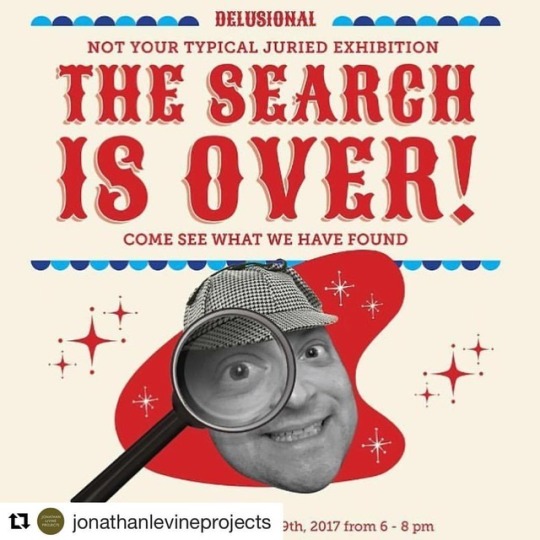
Super proud to be among the 42 artists chosen to participate in 'Delusional - Jonathan Levine's search for the next great artist' group show @manacontemporary in NJ opening on the 9th of August. Happy Times :) #Repost @jonathanlevineprojects (@get_repost) ・・・ THE SEARCH IS OVER! 'Delusional: Jonathan LeVine's Search for the Next Great Artist' opens on August 9th and will feature work by the following 42 artists: Charles V. Bennett, Adam Crawford, Helena de Barros, Anthony Freda, Alê Jordão, Diana Carolina Lopez, Merve Morkoc, Vittorio Ottaviani, Jim Salvati, Nicci Sevier-Vuyk, Stikman, Garry Buckley, Jeremy Burks, Thomas John Carlson, Julian Clavijo, Ian Cumberland, Alyssa B. DeVille, Jennifer Gennari, Ronald Gonzalez, Masha Gusova, Julia Ibbini, Kirpy, Aya Kakeda, Will Kurtz, Radoslaw Liwen, Holly Matthews, Caitlin McCormack, Thomas Robert Meyers, David Miller, Rick Newton, Benjamin Nordsmark, Hyunjin Alex Park, Austin Parkhill, Johnathan Reiner, Fiona Smyth, Trent Taft, Josh Tiessen, Risa Tochigi, Win Wallace, Tyler Whitlock, Choi Wong & Jim Woodring • Continue visiting our page over the next 12 days as we post more about these amazing artists! • #jonathanlevineprojects #delusional #jonathanlevinessearchforthenextgreatartist #groupshow
0 notes
Text
Preview- Double Face (Bluray)
Preview- Double Face (Bluray)
In the post-war years, the proliferation of transnational European co-productions gave rise to a cross-pollination of genres, with the same films sold in different markets as belonging to different movements. Among these, Riccardo Freda (I vampiri, The Horrible Dr. Hichock)’s Double Face was marketed in West Germany as an Edgar Wallace ‘krimi’, while in Italy it was sold as a giallo in the…
View On WordPress
0 notes
Photo
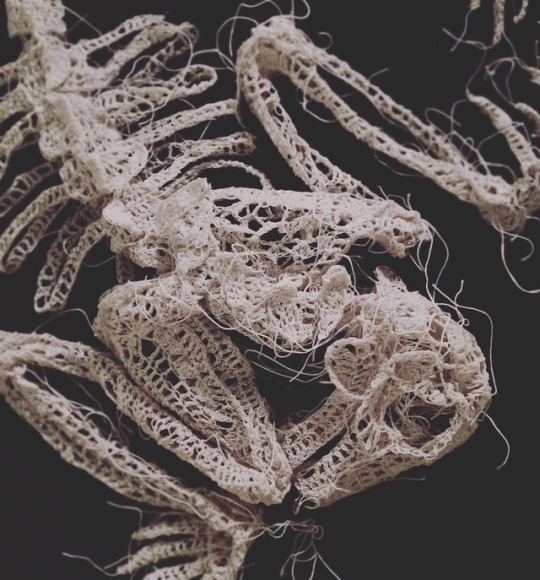
I'm so excited and humbled to have two works included in "Delusional: Jonathan LeVine's Search for the Next Great Artist" which opens next week, on August 9th. . The exhibit will feature work by Charles V. Bennett, Adam Crawford, Helena de Barros, Anthony Freda, Alê Jordão, Diana Carolina Lopez, Merve Morkoc, Vittorio Ottaviani, Jim Salvati, Nicci Sevier-Vuyk, Stikman, Garry Buckley, Jeremy Burks, Thomas John Carlson, Julian Clavijo, Ian Cumberland, Alyssa B. DeVille, Jennifer Gennari, Ronald Gonzalez, Masha Gusova, Julia Ibbini, Kirpy, Aya Kakeda, Will Kurtz, Radoslaw Liwen, Holly Matthews, Thomas Robert Meyers, David Miller, Rick Newton, Benjamin Nordsmark, Hyunjin Alex Park, Austin Parkhill, Johnathan Reiner, Fiona Smyth, Trent Taft, Josh Tiessen, Risa Tochigi, Win Wallace, Tyler Whitlock, Choi Wong, Jim Woodring, and this guy. #jonathanlevineprojects #delusional #jonathanlevinessearchforthenextgreatartist #groupshow (at Jonathan LeVine Projects)
0 notes